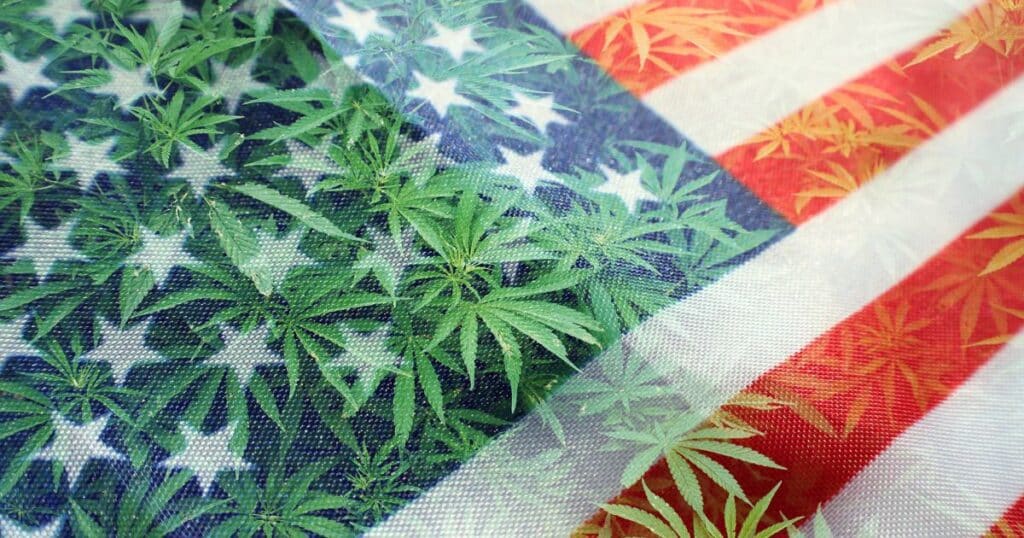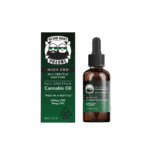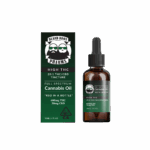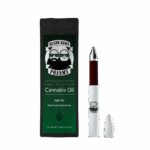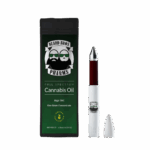In recent years, Delta-8 THC has skyrocketed in popularity. A recent study shows it is becoming a substitute for Delta-9 THC in states where marijuana remains illegal. The study reveals some eye-opening findings about the rates of Delta-8 THC exposures reported to poison centers in the United States.
Interestingly, these rates are significantly lower in states that have legalized marijuana or banned Delta-8 THC altogether. Let’s look at the study findings and see how the 2018 Farm Bill created a loophole for Delta-8 THC and why states in the US are adding stricter regulations.

What is Delta-8 THC?
Delta-8 Tetrahydrocannabinol (∆8-THC) is a cannabinoid found in hemp and cannabis plants. Unlike its more famous counterpart, Delta-9 THC, Delta-8 is often derived from hemp and is known for producing milder psychoactive effects. It’s available in various forms, including edibles, beverages, and vaping products, and is sold widely across the U.S., often without stringent regulatory oversight.
A study published in the Journal of Medical Toxicology found that from January 2021 to December 2022, there were 4,925 exposures involving Delta-8 THC reported to U.S. poison centers. The rate of exposure spiked by 79%, from 0.53 per 100,000 population in 2021 to 0.95 in 2022. A significant 69.8% of these exposures were reported from the U.S. South, a region where recreational marijuana, in large part, still remains illegal.
How the 2018 Farm Bill Created a Loophole For Delta-8
The 2018 Agriculture Improvement Act, commonly known as the Farm Bill, legalized hemp and its derivatives containing less than 0.3% Delta-9 THC. This legalization led to a surge in hemp production and subsequently a surplus of cannabidiol (CBD). Manufacturers started converting excess CBD into Delta-8 THC, exploiting a legal loophole. Unlike Delta-9 THC, Delta-8 doesn’t undergo the same level of regulatory scrutiny, making it widely accessible.
The study found that in states where marijuana is illegal, people are turning to ∆8-THC as a substitute. In 2022, the average rate of ∆8-THC exposures in states where cannabis was illegal was 1.64 per 100,000 population, compared to just 0.52 in states where marijuana was legal. The absence of Delta-9 THC products in these states likely fuels the demand for Delta-8.
The study found notable regional variations in Delta-8 THC exposures. The U.S. South accounted for 70% of exposures, followed by the Midwest at 22%. The Northeast and West reported far fewer cases, at 6% and 2%, respectively. These geographic disparities suggest the need for region-specific prevention strategies.
States that have either banned or regulated Delta-8 THC report significantly lower exposure rates. For instance, in 2022, states with unregulated ∆8-THC had an average exposure rate of 1.36 per 100,000 population. In contrast, states that had banned it reported a much lower rate of 0.17. Similarly, states where cannabis use was legal had fewer ∆8-THC exposures than those where it was illegal.
Despite the public health risks, there has been relatively little research on Delta-8 THC. The lack of federal oversight means that ∆8-THC products often come with safety issues, such as contamination with heavy metals and inaccurate labeling. This may pose risks for individuals due to lax regulations that allow easy access to these products.
Need for Consistent Regulation?
The study authors strongly advocate for consistent regulation of Delta-8 THC across all states. Currently, 15 states have banned Delta-8 THC, and another nine have imposed restrictions. However, a uniform regulatory framework would help mitigate the associated health risks and reduce the number of poison center exposures.
Stricter regulations could lead to safer products and fewer health risks. The study’s findings align with previous research showing that ∆8-THC use is higher in states without marijuana legislation. A consistent regulatory approach could help curb this trend and make Delta-8 THC consumption safer for everyone.
Actionable Insights for Policymakers
The study suggests policymakers should consider adopting uniform regulations for ∆8-THC to protect public health. This involves setting stringent manufacturing standards, enforcing age verification, and ensuring accurate labeling. Such measures would help mitigate health risks and provide a more controlled environment for Delta-8 THC use.
Consumers should also be vigilant about the products they use. Always purchase Delta-8 THC products from reputable sources and check for third-party lab testing. Being informed can help you make safer choices and reduce the risk of adverse health effects.
More research is needed to understand the long-term effects of ∆8-THC, especially among vulnerable populations like children and teens. Future studies should focus on the impact of state regulations and the effectiveness of various prevention strategies.



